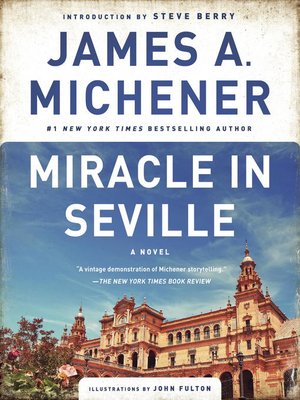
Sign up to save your library
With an OverDrive account, you can save your favorite libraries for at-a-glance information about availability. Find out more about OverDrive accounts.
Find this title in Libby, the library reading app by OverDrive.



Search for a digital library with this title
Title found at these libraries:
| Library Name | Distance |
|---|---|
| Loading... |
James A. Michener, the Pulitzer Prize–winning master of the historical saga, returns to his beloved Spain with this magical novel of Seville at Easter time, a season of splendid pageantry, thrilling bullfights, deep piety—and the possibility of miracles. An American sports journalist has come to the city to report on efforts by the rancher Don Cayetano Mota to revive his once-proud line of bulls. Not only does Mota pray to the Virgin Mary, but he takes on herculean acts of devotion during the solemn celebrations of Holy Week. With treacherous enemies waiting in the ring, Mota’s struggle taps deeply into life’s mysteries, shaking the newspaperman’s skepticism and opening his eyes to the wonder of faith. Featuring illustrations by the American bullfighter John Fulton, Miracle in Seville is Michener at his most dazzling.
BONUS: This edition includes an excerpt from James A. Michener’s Hawaii.
Praise for Miracle in Seville
“Eloquent . . . a vintage demonstration of Michener storytelling . . . What emerges most strongly is the real admiration and awe that lovers of bullfighting feel for the toro bravo.”—The New York Times Book Review
“Compelling . . . told with an understanding of and appreciation for a culture where matadors are artists and miracles are possible.”—Chicago Tribune
BONUS: This edition includes an excerpt from James A. Michener’s Hawaii.
Praise for Miracle in Seville
“Eloquent . . . a vintage demonstration of Michener storytelling . . . What emerges most strongly is the real admiration and awe that lovers of bullfighting feel for the toro bravo.”—The New York Times Book Review
“Compelling . . . told with an understanding of and appreciation for a culture where matadors are artists and miracles are possible.”—Chicago Tribune







